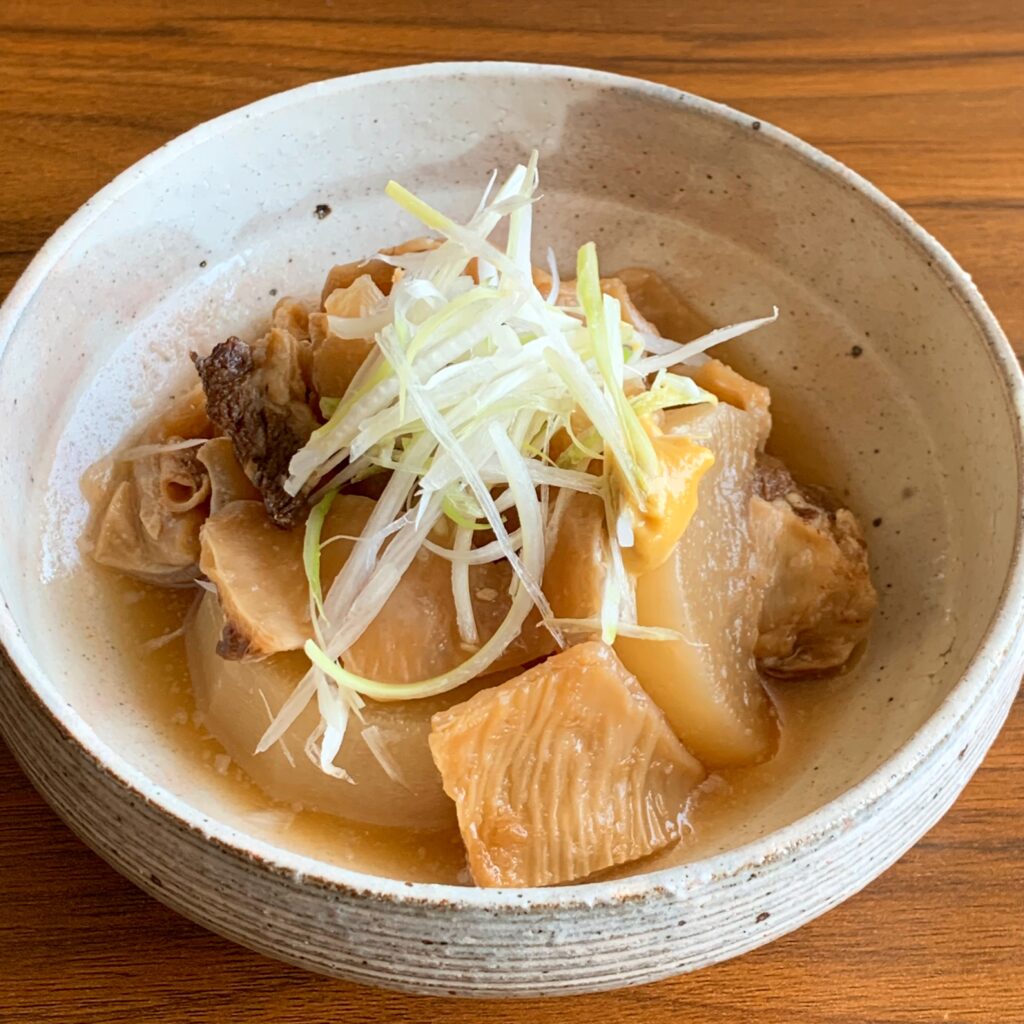
Gyusuji Daikon Nikomi (Beef Tendon Stew)(牛すじ大根煮込み)
What kind of dish is Gyusuji Daikon Nikomi (Beef Tendon Stew)??
gyusuji = beef tendon daikon = Japanese radish
Gyusuji daikon is beef tendon and daikon stew.
The unique texture and flavor of beef tendon, Japanese daikon radish soaked in flavor, and the spiciness of karashi (Japanese mustard) combine to create an incredibly delicious dish.
Beef tendon is divided into three types:
- Achilles tendon
- Membrane (Diaphragm)
- Akami (Muscle tendons in various parts of the body, not just in a specific area.)
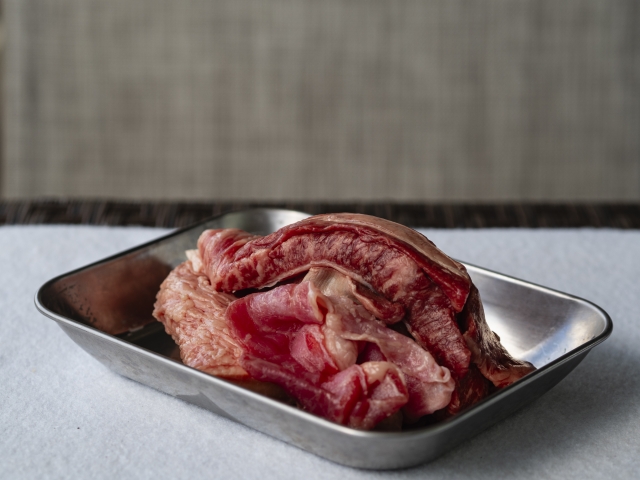
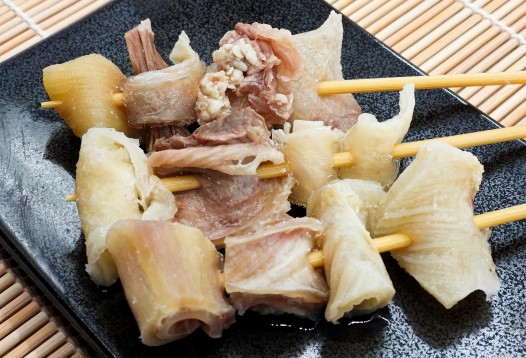

This recipe uses beef tendons that have been prepared beforehand.
Menus using beef tendon
Beef tendon absorbs the flavor of seasonings well and releases delicious flavors from the beef tendon itself. I have also posted other recipes using beef tendon, so please try making beef tendon dishes.
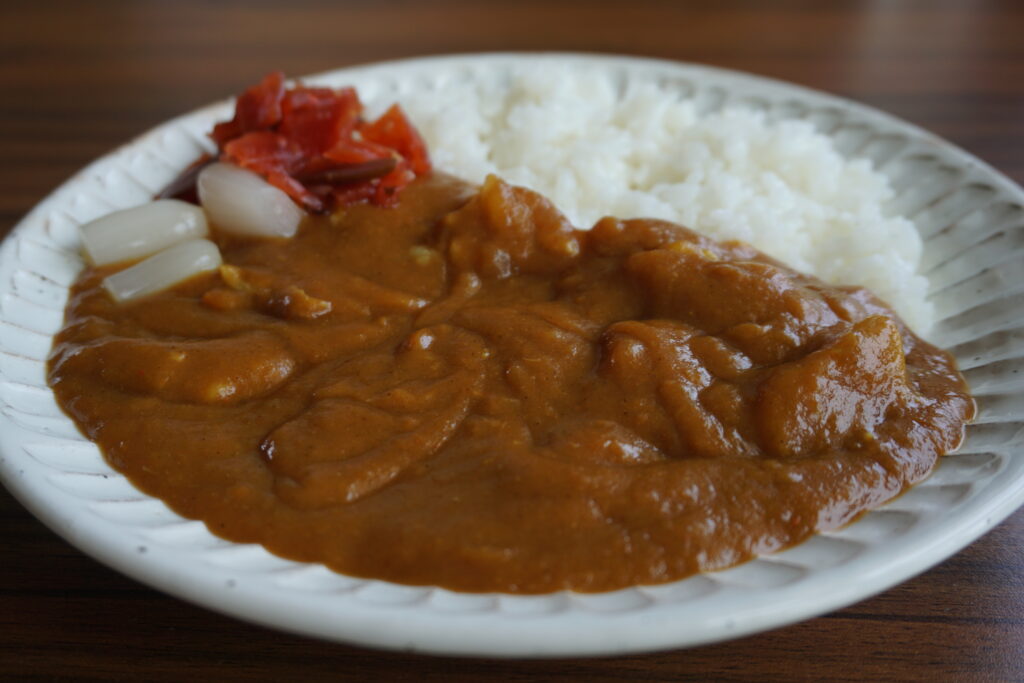
- Oden: Oden is a hotpot dish that is essential in winter in Japan, and gyusuji is a popular ingredient in areas west of the Kansai region.
- Doteni: A stew made with beef tendon, daikon radish, and konjac seasoned with miso. Motsu (pork or beef innards) can also be used instead of gyusuji.
- Sujikon: Beef tendon and konjac stewed in soy sauce. (Sujikon served on udon or soba noodles is called bokkake.)
- Gyusuji curry : Gyusuji also pairs perfectly with curry rice, Japan’s national dish. The unique flavor of gyusuji matches perfectly with the spices.
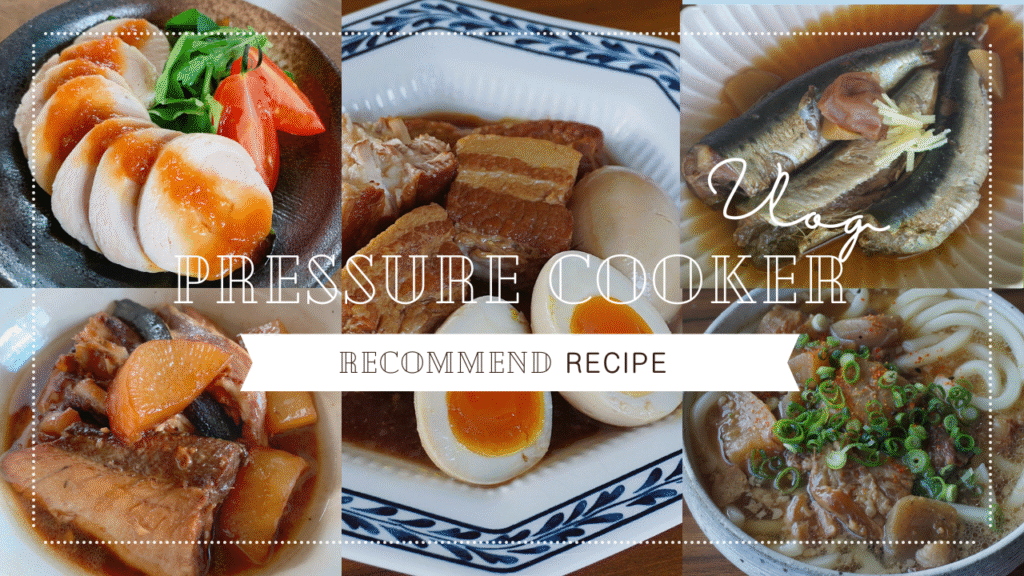
NUTRITION VALUE :Gyusuji Daikon Nikomi (Beef Tendon Stew) (2SERVINGS)

Total Nutrition Value
- 695 Calories Protein 79.3 g Total Fat 12.9 g Total carbohydrates 67.9 g Sodium 12.7 g
Nutrition Value of Boiled Beef tendon/100g
- 152 Calories Protein 28.3 g Total Fat 4.9 g Total carbohydrates 0.0 g Sodium 0.2 g
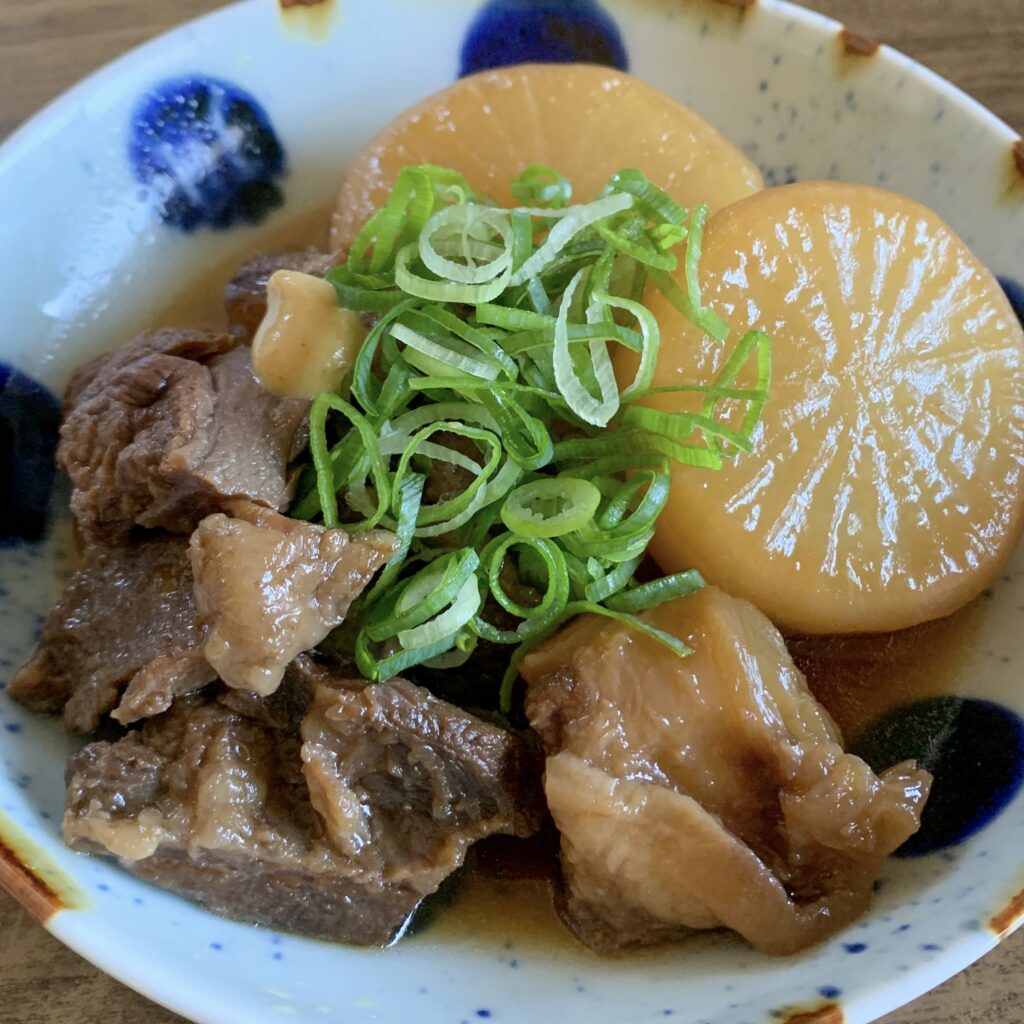
INGREDIENTS : Gyusuji Daikon Nikomi (Beef Tendon Stew) (3SERVINGS)
- Boiled beef tendon 250g
- Japanese daikon radish 500g
- Dark soy sauce 40g
- Light soy sauce 40g
- Sugar 20g
- Mirin 20g
- Sake 20g
- Grain vinegar 8g
- Green part of white leek 1 piece
- White leek (or green onion) 10g
- Karashi (Japanese mustard) moderate amount
How to make Gyusuji Daikon Recipe (Beef Tendon and Japanese Radish Stew)
Even if you use pre-boiled beef tendons, some lye will still come out. I use a lye-removing sheet, but if you can’t get hold of one, soak the gyusuji in hot water and then wash it before cooking.
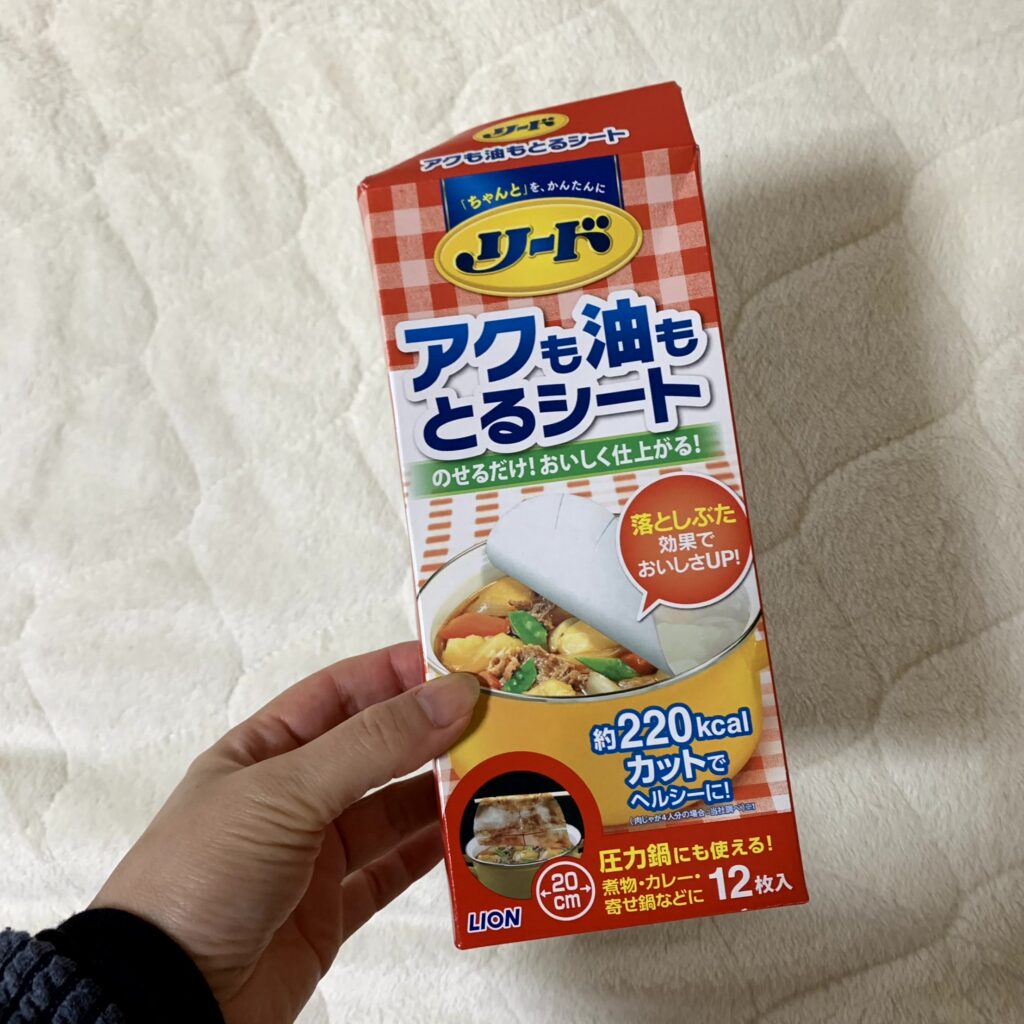
- Wash and peel the daikon radish and cut into 3cm thick slices.
- Place the Japanese daikon radish, beef tendon, and dark soy sauce, light soy sauce, sugar, mirin, sake, vinegar and green part of white leek in a pressure cooker.
- Loosely cover the lye absorbing sheet over the ingredients.
- Heat over high heat until the pressure builds up, then reduce the heat to medium and cook for 15 minutes.
- Turn off the heat and wait until the pressure releases naturally.
- Open the lid of the pressure cooker and swirl the pot a few times to distribute the seasonings.
- Simmer until the broth is reduced by half.
- Cut the white leek part into thin strips
- Topped with white leek and Japanese mustard.
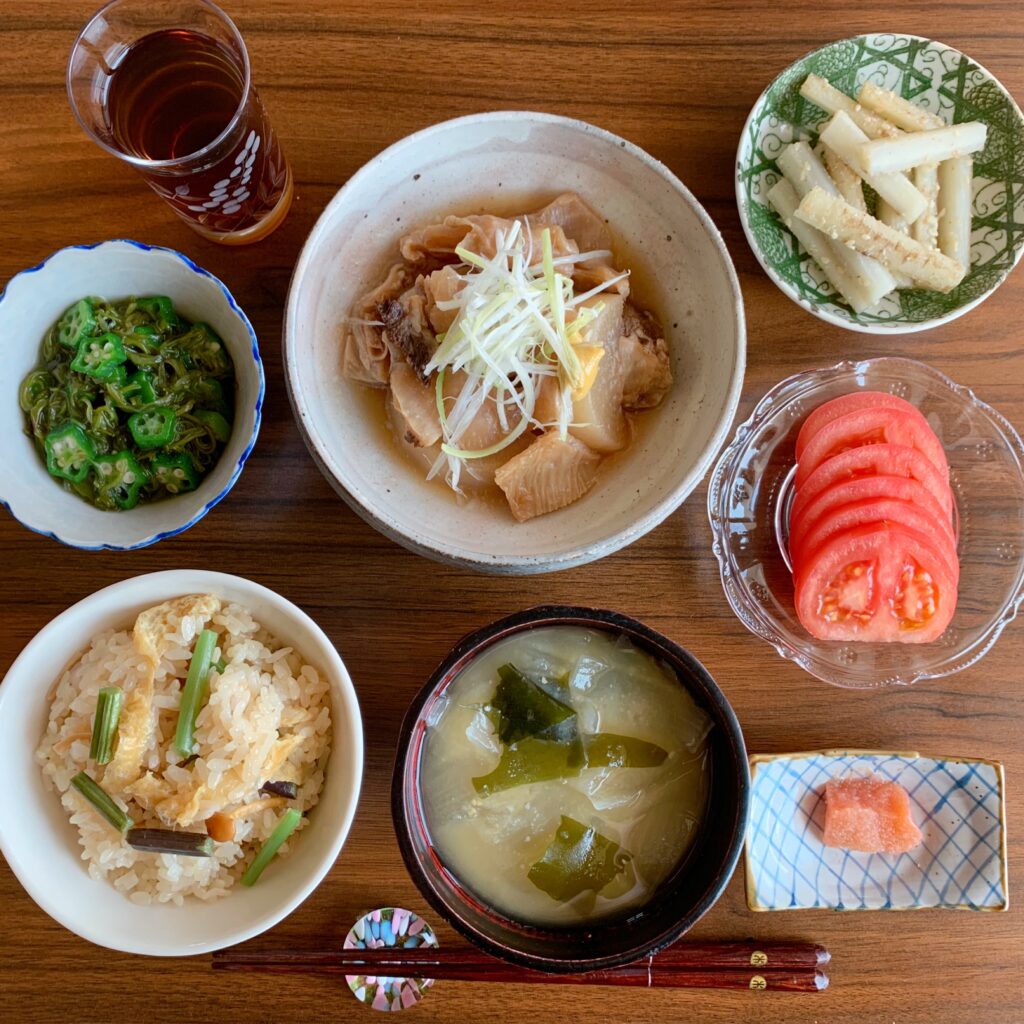
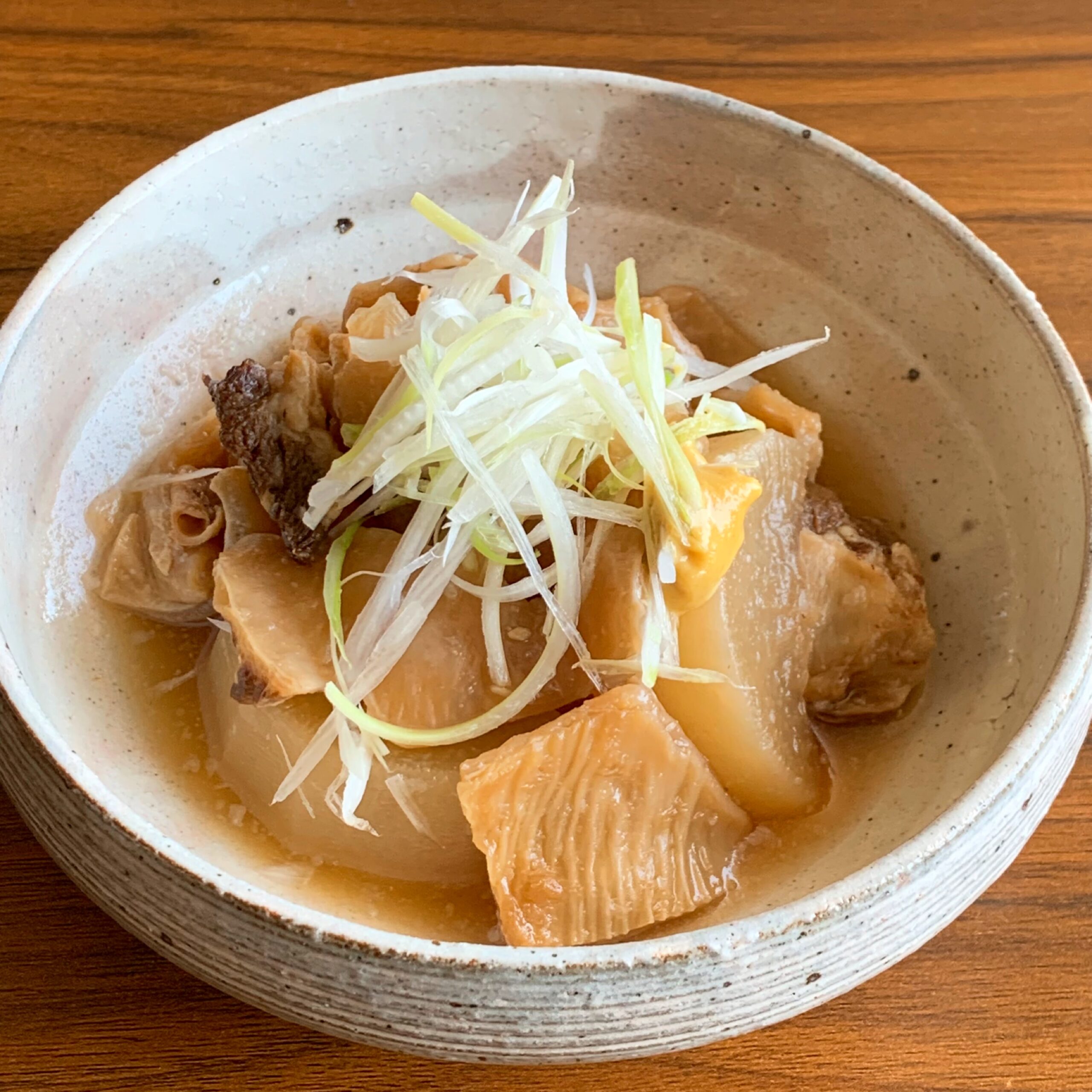
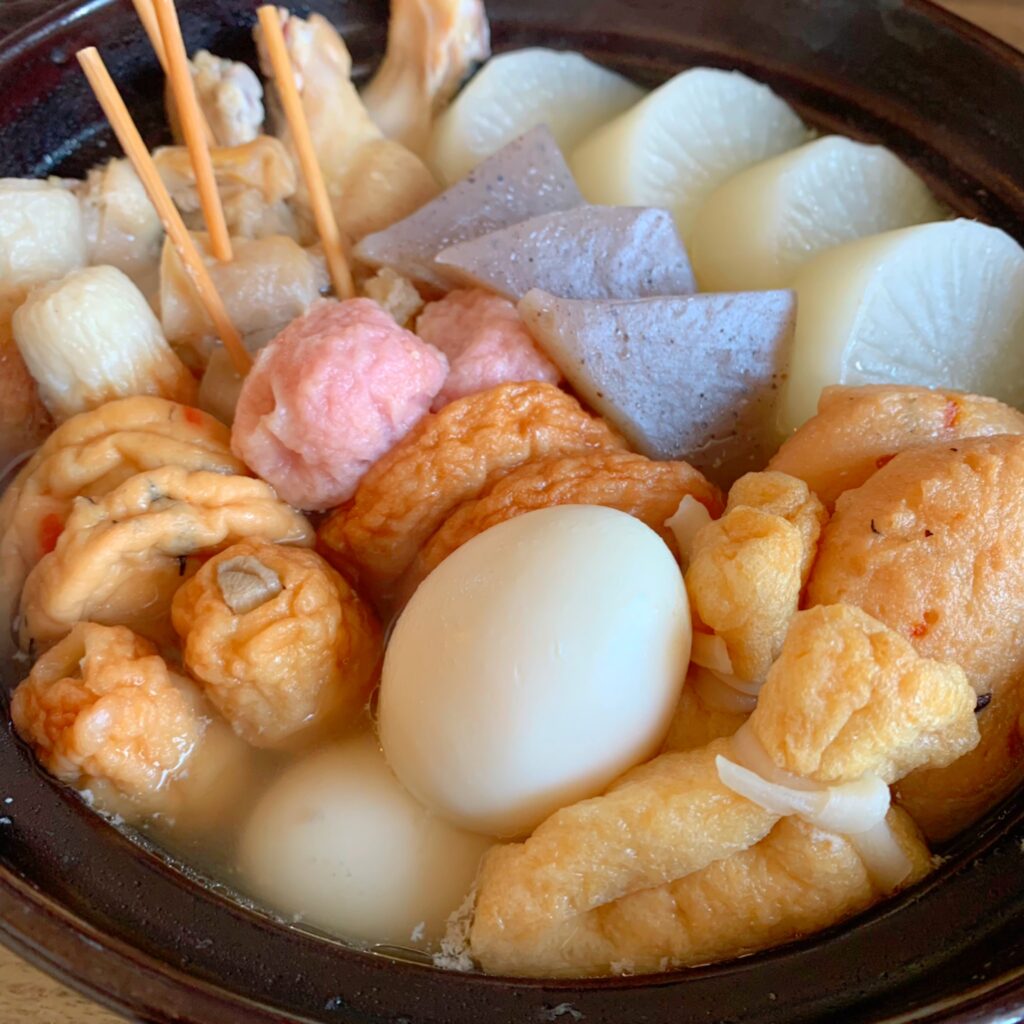


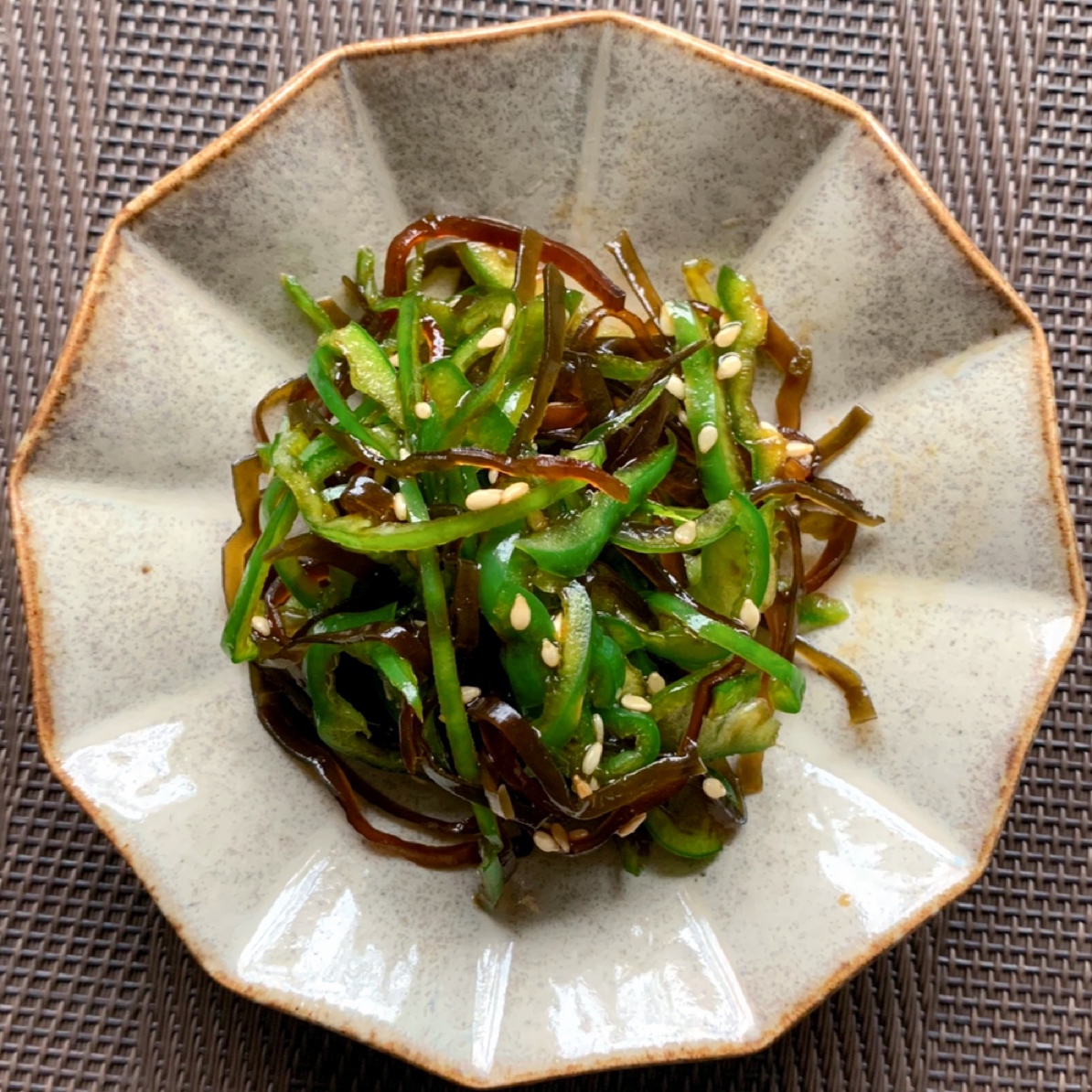
コメント